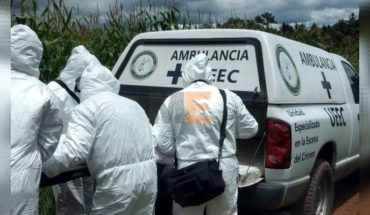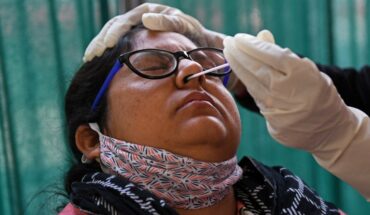In Colima motorists bought legal gasoline to circulate 63.9 kilometers a day on average while in the State of Mexico, they only bought to drive 4.5 kilometers during the first half of 2019 according to INEGI and SENER data analyzed by GLAC Consulting.
The difference between what was consumed in Colima and the mexiquense entity was 1,400% per vehicle.
The reason for this consumption difference is multifactorial: income, productive activities of the entity to illicit markets.
The State of Mexico is the entity with the largest number of vehicles in the country and registers the lowest purchase of gasoline at formal service stations nationwide.
Read: Zigzagging is bad idea: Pemex gives tips for saving gas
In 2018, on average each entity had 1 million 493 thousand 467 vehicles in circulation. The State of Mexico has the largest number of vehicles in circulation with 7 million 342 thousand 919 units and the one with the least is Campeche with 325 thousand vehicles.
Gasoline consumption per vehicle
Nationally, the average fuel sales on the legal market per vehicle was 2.9 litres per month, 88.4 litres per month, equivalent to 0.49 barrels on average per month, between January and July 2019. (Total 22 million 99 thousand 215 barrels were sold in absolute terms).
When it comes to consuming legal gasoline, the state of Colima is where they bought the most. From January to July 2019 it was the entity with the highest sale of gasoline nationally, with 2.21 barrels per month per vehicle, equivalent to 319.4 liters per month and 10.6 liters per day.
The State of Mexico is where they bought legal gasoline domestically, 0.8 liters daily, 23.8 liters per month (equivalent to 0.15 barrels per month per vehicle).
Find out: ‘Litre x Litre’, Profeco’s new app to find the cheapest petrol and report irregularities
According to official figures (New Vehicle Distributors with Warranty, U.S. Enviromental Protection Agency and “The Blue Book”), a vehicle covers 20,000 kilometers on average per year, equivalent to 54.8 kilometers per day. To travel this distance an estimated 9.1 liters per day is required (estimating an average yield of 6 kilometers per liter).
From this perspective, vehicles in the State of Mexico require 8.3 litres per day more than they are consuming in 2019.
According to the mileage traveled per unit per day and its estimated consumption of gasoline, in Colima they acquire 10.6 liters of gasoline, higher than the estimated standard of 9.1 liters per day, while the national average is 2.9 liters per vehicle per vehicle.
Fuel theft
One of the expected effects of the Combat Fuel Theft (huachicol) strategy was for consumers to fill their vehicle tanks in the formal market and increase sales at service stations, but this has not been the case, in 2019 the legal sale decreased by 6.3% compared to 2018 according to PEMEX.
The Federal Government reported on 1 September 2019 that this administration reduced the theft or diversion of fuels by 94%, but clandestine outlets fell 2% compared to 2018 PEMEX reported.
You may be interested: Hallan takes underground gasoline on the market in Gustavo A. Madero; there are 4 detainees
Between January and July 2019, the country recorded 6.86 clandestine shots per 100,000 inhabitants, equivalent to 8,642 takes in total, representing a marginal decrease of 2% from 2018, when it recorded a rate of 7 takes, equivalent to 8,742 takes.
In the same period the State of Mexico recorded 6.64 clandestine shots per 100 thousand inhabitants, equivalent to 1,184 takes, or 40% more compared to 2018, when a rate of 4.82 takes was recorded, equivalent to 850 takes.
It is important to note that it recently changed the methodology to measure fuel theft, in the previous federal administration it was estimated the abduction of gasoline by clandestine outlets and as of December 1, 2018, the theft is measured by pipes and called fuel diversion.
By analyzing with the GLAC Index the correlation between legal gasoline sales and underground fuel outlets, Colima found that Colima does not register clandestine shots and has the highest consumption in the formal fuel market, as does Baja California Sur, Guerrero, Campeche and Nayarit.
Read: UNAM Student Creates Device That Helps Save Up to 12% Gasoline Consumption
At the other end the entities with the greatest correlation between legal gasoline sales and the highest number of clandestine outlets are: Tabasco -0.81 (high), State of Mexico -0.76, Michoacán -0.75 (high), Oaxaca -0.72 (high) and Puebla -0.72 (high).
Correlation from -0.6 is considered high, i.e. underground fuel outlets generate an illicit market that replaces the legal market.
By contrasting the legal sale of gasoline per vehicle per day and clandestine fuel outlets per entity, they show that in entities with the most clandestine outlets, consumption in service establishments is lower per vehicle.
What we do in Animal Político requires professional journalists, teamwork, dialogue with readers and something very important: independence. You can help us keep going. Be part of the team.
Subscribe to Animal Politician, receive benefits and support free journalism.#YoSoyAnimal





